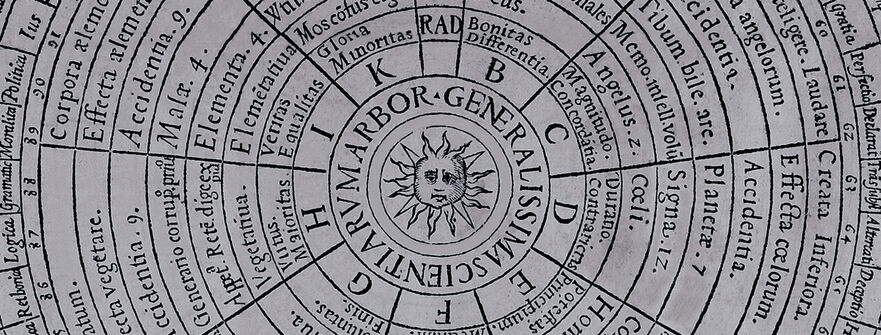Who is Raphaël Sandoz?
After a background in physics and philosophy at the University of Neuchâtel, Raphaël Sandoz completed his PhD in 2013 at the History and Philosophy of Science Unit of the University of Geneva. His doctoral thesis aims at putting the problem of the applicability of mathematics to physics back into its historical context. Afterward, he was awarded a mobility grant from the SNSF and moved to the University of Oxford, where he spent two years as a postdoctoral fellow. His research focused on the history of scientific disciplines and the evolution of how they interact over time. A second mobility grant from the SNSF enabled him to carry out a project at the University of Chicago, which led to the creation of an Interactive Historical Atlas of the Disciplines. Back in Switzerland, he pursues his research at the Global Studies Institute of the University of Geneva, focusing on the influence of disciplinary boundaries on scientific discovery.
What is the Interactive Historical Atlas of the Disciplines?
Presented by Raphaël, the Interactive Historical Atlas of the Disciplines is a tool that organizes a great quantity of data that concerns the structure of the science. To use Raphaël’s words, the Atlas describes a genealogical tree of all the disciplines able to retrace the history of human knowledge. The Atlas has therefore to be considered a systematic cartography of the transformations of different disciplines across centuries.
Since recognizing the evolution of the boundaries of the disciplines is necessary to understand the background history of the ideas, Raphaël’s work has a philosophical, sociological, and methodological flavor.
Raphaël has realized a website presenting different tools apt to explore the classification of different sciences across time. The Atlas contains 255 different scientific classifications. This tool allows us to retrace the evolution of different disciplinary boundaries from antiquity till now.
By consulting the Atlas, we discover, for instance, that many scientific disciplines have disappeared. Raphaël speaks about the so-called “chronology” i. e. ancient mathematics that was complementary to geometry between 1700 and 1750 centuries, and which has progressively disappeared.
Moreover, it is interesting to notice how the identity of a given discipline changes over time. Raphaël’s Atlas allows us to chronologically describe the progressive (re)definitions of these disciplines.
Another interesting feature concerns interdisciplinarity. By tracing the evolution of disciplinary boundaries, the Atlas allows us to study, for instance, the synergy between physics and different kinds of mathematics.
Some important features
Raphaël’s work shows how certain changes in the boundaries dividing one discipline from another involve some modifications of the general structure of knowledge. Also, a particularly relevant phenomenon is that of the so-called “reprise”. As Raphaël claims, it is often the case that an emergent discipline uses some methods that other more ancient sciences have used. This phenomenon leads to some adaptions of the old epistemological framework to some new objects. As a consequence, this has some repercussions on the evolution of those methods and the global structure of the disciplines in question in general.
Grants
Raphaël’s project has been developed at the University of Geneva. Raphaël has received a grant from the FNSNF (Swiss National Science Foundation).
Further outcomes
The Atlas has made it possible to start an intense study on the historical evolution of the criteria used for distinguishing one discipline from another. Some of the features of this study already appear in the paper “Thematic Reclassifications and Emerging Sciences (2021)” in which Raphael presents a quadripartite criterion of classification for science, and describes its flaws as well as its reconstruction across the centuries. The paper considers some of the main arguments issues from Holton, Tondl, Barker, Chen, Hoyningen-Huene, Soler, and Laudan. Kuhn’s infamous work on scientific paradigms is also explored. However, despite the wide background which Raphaël proposes, his results are original.
Moreover, a more detailed analysis of the datas issues from the Atlas is presented in the paper “Comment retracer les mutations des frontières disciplinaires. Éléments d’une cartographie historique des savoirs” (2023). Here, Raphaël builds a systematic cartography describing the transformations of the disciplinary fields across the centuries. Then, he points out certain difficulties related to some incompatibilities between different cartographic systems. These difficulties are nonetheless very relevant because they allow us to grasp the reconfiguration of the boundaries between the disciplines across time, and so to represent them by a more detailed and precise configuration.
It is time now to check the Atlas here: https://atlas-disciplines.unige.ch
